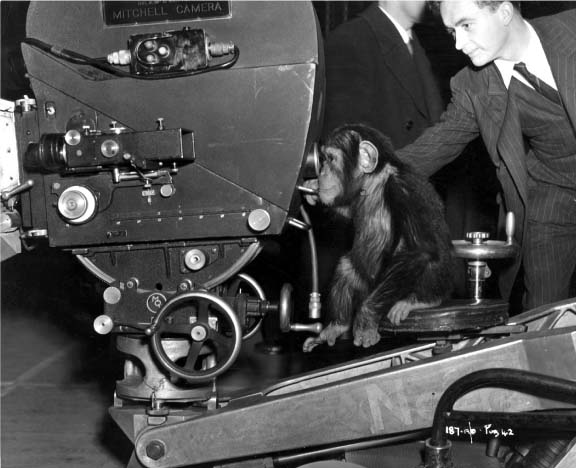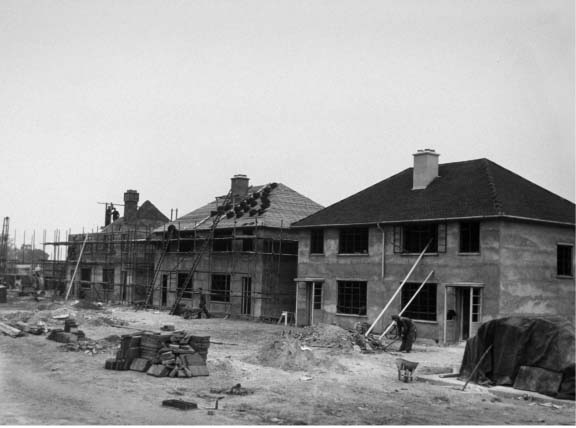Lyttelton's Britain (8 page)
Read Lyttelton's Britain Online
Authors: Iain Pattinson
Sadly one of Brighton’s great unsung heroes retired recently. Eighty-year-old Ted Latham was the town’s longest serving deckchair attendant until August 2007, when he collapsed on the beach, and it took three people half an hour to put him back up again.

E
ASTBOURNE
is a popular seaside resort on what’s known as the Côte d’Azur of Sussex, ‘côte’ meaning ‘coast’ and ‘azur’ meaning ‘blue rinse’.
The earliest settlement in Eastbourne, on a stream (or ‘bourne’) had no name, but as the hamlet grew, a competition was held to choose a title to suit this town to the east of the bourne. On the day of final entries, Halley’s comet passed over and the new name became ‘Bourne Under A Wanderin’ Star’. However, following copyright problems with the writers of
Paint Your Wagon
, it was changed to ‘Oklahoma’. This resulted in obvious confusion, with coach parties travelling to the American Midwest in search of a bingo hall, and so the town became ‘Eastbourne’.
Eastbourne grew rapidly as a garrison town during the Napoleonic Wars, when troops were massed at the town to embark for Waterloo. But as usual, the 8.45 stopping service was cancelled, so they went to Belgium instead. There they met Napoleon in the conflict which was to give the famous railway station its name – the Battle of Maidstone West.
During Victorian times, Eastbourne’s town centre was re-built under the Duke of Devonshire, who sent Henry Currey on a tour of Europe to collect architectural ideas. Currey travelled to Paris, Berlin and Pisa, the result being the fine neo-classical
construction in Grove Road known as ‘The Leaning Wall of Eiffel’.
In 1847, a sporting academy was established at Devonshire Park to prepare English lady tennis players for Wimbledon. Training involved a single player hitting the ball against the side of the clubhouse, and every summer since, Eastbourne has echoed to the cry of ‘advantage brick wall’.
It was in 1903 that Eastbourne came to the world’s attention as the first town to create a municipal bus company running steam powered coaches. However, the people of Bexhill rioted in fear of such modern technology, when the service was extended there in 1997.
Eastbourne has long been the subject of Royal patronage, a connection specially commemorated during the Silver Jubilee when the Mayor, Winifred Lee, was presented to the Queen Mother. Most other towns just gave her a box of chocolates.
In the 1930s the young Princesses Elizabeth and Margaret holidayed in Eastbourne and built castles on the beach. However, these had to come down after they were refused planning permission on the grounds that the sisters already had seven between them.
Charles Darwin developed his theory of evolution in Eastbourne, and his great-great-great-great grandson still lives in the town, where he retired after a long career on television, appearing in adverts for PG Tips.
During World War II, Eastbourne became the first British town to be the target of a bombing raid, but with improvements in aircraft range, the RAF soon started hitting Germany instead. At the start of the war, many schoolchildren were evacuated to Eastbourne from London, but being too close to the action, they were soon taken by train to Coventry.

The director of C4’s
Big Brother
setting camera angles for the first series
Noted historic buildings in Eastbourne include the Old Manor House where recent restoration work has revealed a hidden wall mosaic and a priest-hole. But despite putting traps down, they haven’t caught him yet.
Famous names associated with Eastbourne include Douglas Bader and the town’s museum holds some of his personal possessions. These include his last school report which reads: ‘in future, Bader really must learn to pull his socks up’.
Political thinkers Marx and Engels came to Eastbourne to
formulate their Communist Party Manifesto, but the pair fell out over whether it really was the workers’ inalienable right to control the means of productivity, and so Marx instead opened a small underpants shop with his friend Spencer.
The composer Debussy, inspired by the view from his balcony, wrote his orchestral work ‘La Mer’ at Eastbourne’s Grand Hotel. The following year he returned but, being allocated a room without a sea view, wrote his less popular piece, ‘La Tesco’s Carpark’.
A regular summer visitor to Eastbourne was the writer Richmal Crompton, who was responsible for bringing us the amusing little character, Martin Jarvis.
With its close proximity to France, these days Eastbourne is a popular summer choice for students on school shoplifting exchanges.

H
ASTINGS
is an historic coastal town with much to be commended. The story of Hastings only really begins with the famous battle, which was fought at a nearby town called ‘Battle’. Now what are the chances of that happening?
In September 1066, William the Conqueror assembled his army across the Channel, and set sail with his army of 9,000 Normans after one of the most confusing roll-calls ever taken.
William landed at nearby Pevensey Bay, where legend has it that as he climbed from his boat, he fell into the water. His apprehensive troops considered this a bad omen, but William grabbed a handful of shingle and called out: ‘Look, I have taken England already’. It was with a sense of great relief that his entire force immediately began to paddle furiously back across the Channel.
Having been called back for their second attempt, and with news of the landing spreading, the Saxon King Harold marched his men from Stamford Bridge, where after a long drawn-out struggle, they’d beaten Hardrada’s Norwegians on penalty shoot-outs.
Harold’s army was something of a ramshackle force, largely comprised of farmers intent on driving the invaders back by putting up signs that read: ‘Private Land – Keep Out’.
The battle took place around Senlac Hill, and after a full day’s fighting, the English were defeated and King Harold was struck in the eye by an arrow. He was carried to the Hastings Free Hospital where he was pronounced ‘dead’, and from there to a fee paying one, where his condition was upgraded to ‘alive’.
William then set about building the castle we see today and first awarded the area to a fellow warrior, Odo, Duke of Alençon, whom William treated as the younger brother he never had, much to the irritation of the younger brother he did have.
In the years following the invasion, Sussex was split into fiefdoms or ‘sees’, as they were known, and the ‘see’ of Hastings passed into the control of Bishop Ralph le Bon. Sadly, the town serfs refused to take his rule seriously, after he renamed the keep ‘le Bon See Castle’.
As you would expect, Hastings’ local history is inextricably linked with the sea. In 1067, Hastings joined with Romney, Hythe, Dover and Sandwich to form a brotherhood of coastal towns. Intended to defend England from any cross-channel invasion, they took the crest of a running horse rampant and stable door bolted. This Cinque Ports League still exists today, but recently changed its name to the Vauxhall Conference.
In the 20th Century, Hastings became notable as the birth-place of television, as its inventor Logie Baird lived in the town with his companion Boo-Boo. The Scottish engineer spent several years in Hastings developing the very first TV set, intended as a relaxation tool to take workers’ minds off the daily grind of cooking, household repairs and gardening.

S
OUTHSEA
is often overlooked in favour of its more famous neighbour, Portsmouth, but as Portsmouth is a lively, bustling city dripping with a rich history, that comes as no surprise.
The great pioneering civil engineer, Isambard Kingdom Brunel, was born in Portsmouth and was christened in the local church amid great celebration, as his parents had just won the first two prizes in Southsea’s ‘most stupid novelty name for a small child’ competition.
As you might expect of a community with such long associations with the sea, Southsea offers interested visitors the opportunity to seek out many museums replicating how a simple island race used to live in the distant past. Alternatively, if they want to see how a simple island race still does live in the distant past, they can nip on a ferry over to the Isle of Wight.
Southsea is in effect the residential district of Portsmouth and owes its prosperity to Portsmouth’s thriving marine industry. This first arose after Henry VIII built a dry dock in the city’s port. However it wasn’t really dry in those days. That didn’t happen until ownership passed to Southern Water PLC.
Most famously, Portsmouth is associated with Lord Nelson’s flagship, the
Victory
, to which visitors flock to see the very spot where the great man fell. It’s marked by a brass plaque reading:
‘At this spot on July 12th 1789, Admiral Horatio Nelson tripped over a bloke screwing a brass plaque to the deck, after inadvertently putting his patch on the wrong eye.’

As glass hit record highs on the commodities markets, there was a spate of window thefts in Southsea
